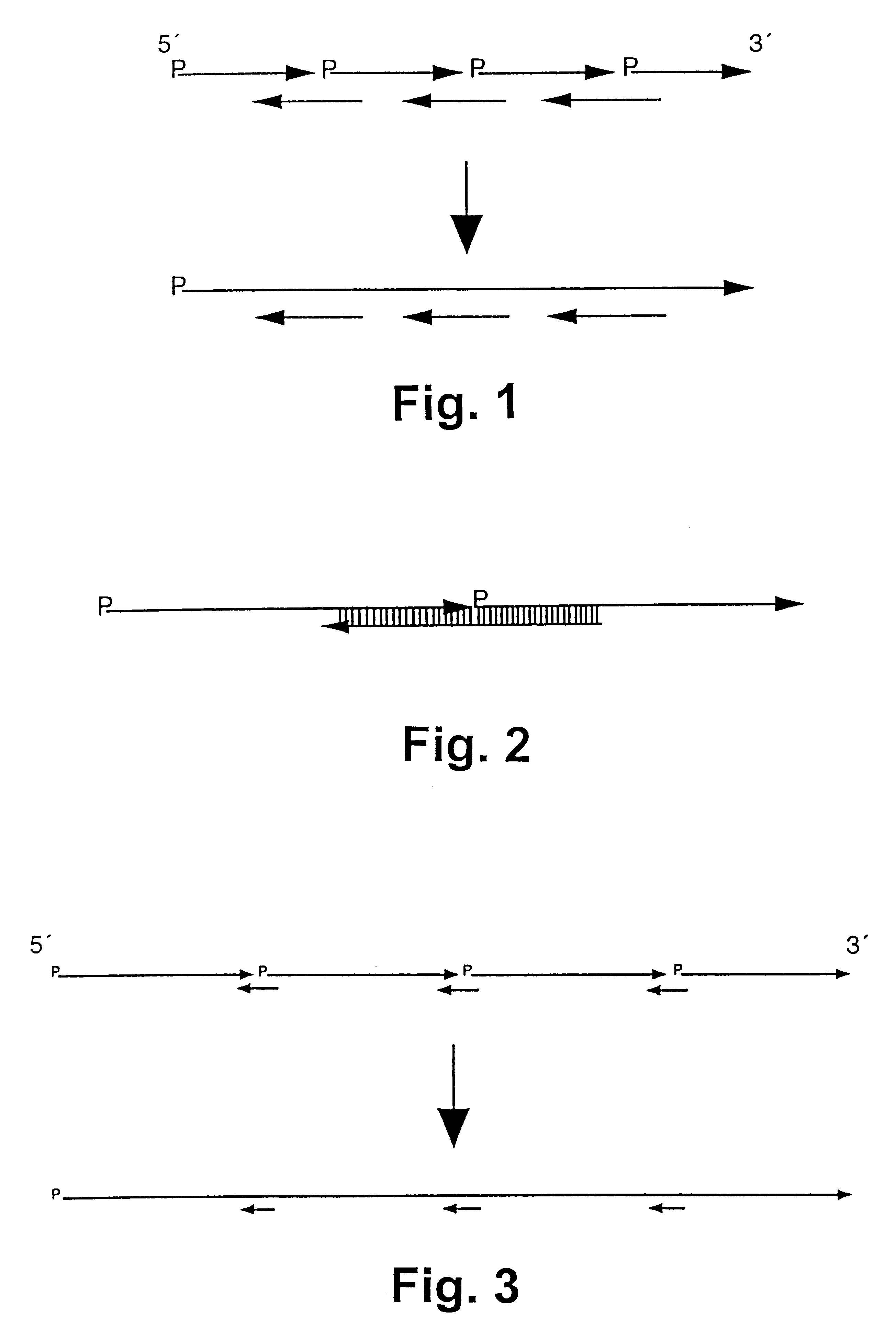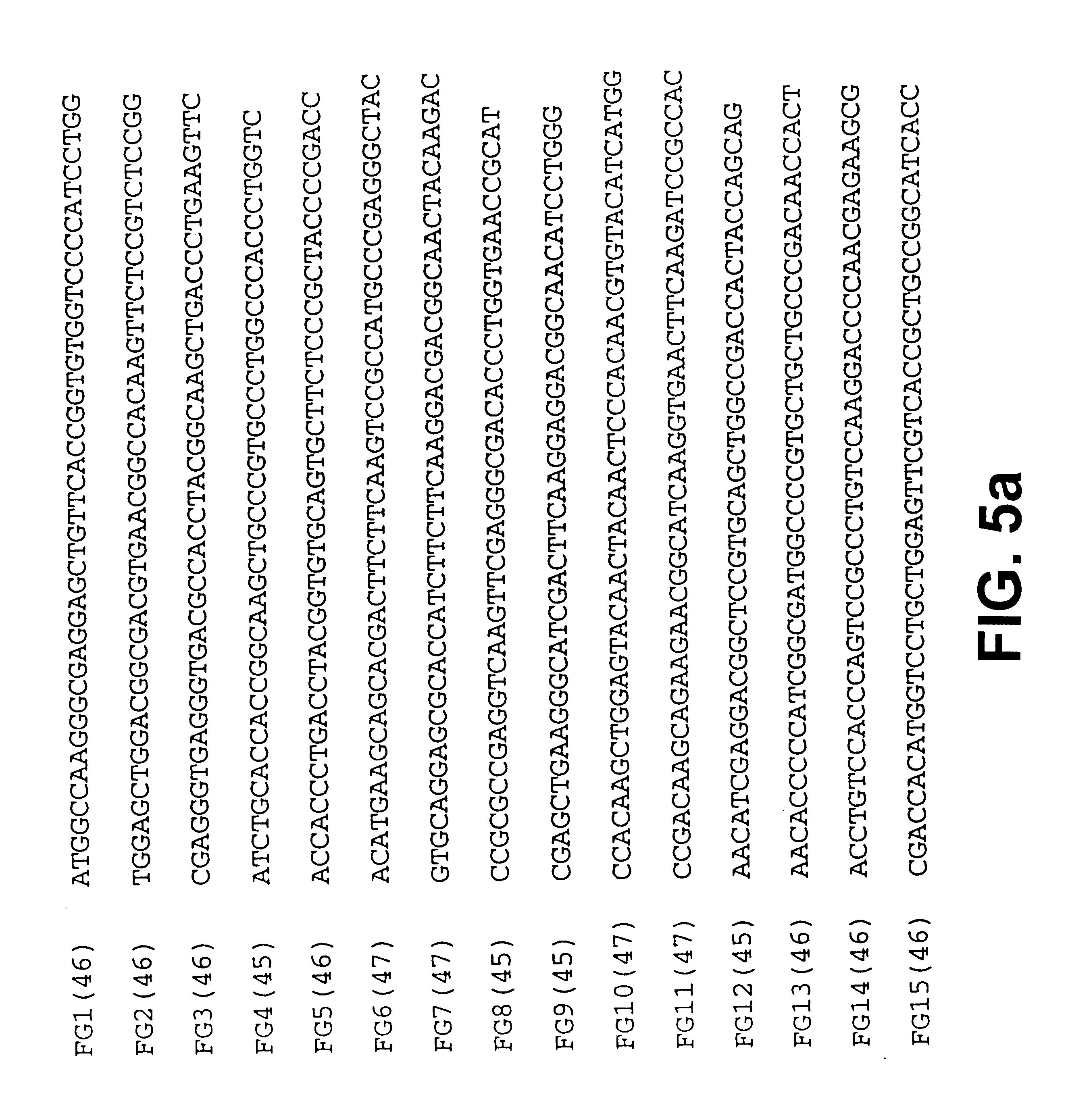Method for producing nucleic acid polymers
- Summary
- Abstract
- Description
- Claims
- Application Information
AI Technical Summary
Benefits of technology
Problems solved by technology
Method used
Image
Examples
Embodiment Construction
Synthesis of an Algae-adapted Gene Coding for Green Fluorescent Protein (GFP) from the Jellyfish Aguorea victorea.
The synthesis of a modified gene (SEQ ID NO: 31) for green fluorescent protein (GFP) from the jellyfish Aguorea victorea shall be shown in the following. The codon use is modified in the synthetic gene such that the codons of green algae, such as Chlamydomonas, are preferred. 30 oligonucleotides with a length of 45 to 50 bases were used for synthesis. The oligonucleotides of the primary strand are designated as FG1 to FG15 (SEQ ID NO: 1-15) and have a length of 45 to 47 bases. The non-linkable oligonucleotides of the complementary strand are designated as FG14rev to FG1rev (SEQ ID NO:16-29) and have a length of 46 bases (FG14rev to FG1rev). The sequences of the oligonucleotides are shown in FIGS. 5a, b.
The reaction was carried out in a programmable thermocycler. The oligonucleotides which form the linkable strand were phosphorylated at the 5' end prior to synthesis react...
PUM
| Property | Measurement | Unit |
|---|---|---|
| Angle | aaaaa | aaaaa |
| Angle | aaaaa | aaaaa |
| Angle | aaaaa | aaaaa |
Abstract
Description
Claims
Application Information
 Login to View More
Login to View More - R&D Engineer
- R&D Manager
- IP Professional
- Industry Leading Data Capabilities
- Powerful AI technology
- Patent DNA Extraction
Browse by: Latest US Patents, China's latest patents, Technical Efficacy Thesaurus, Application Domain, Technology Topic, Popular Technical Reports.
© 2024 PatSnap. All rights reserved.Legal|Privacy policy|Modern Slavery Act Transparency Statement|Sitemap|About US| Contact US: help@patsnap.com










